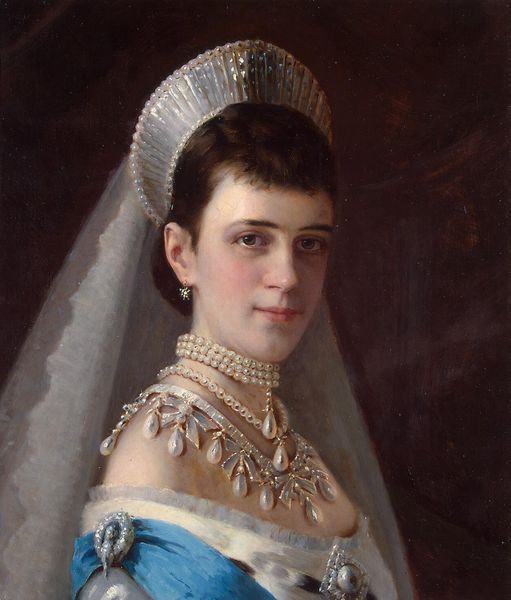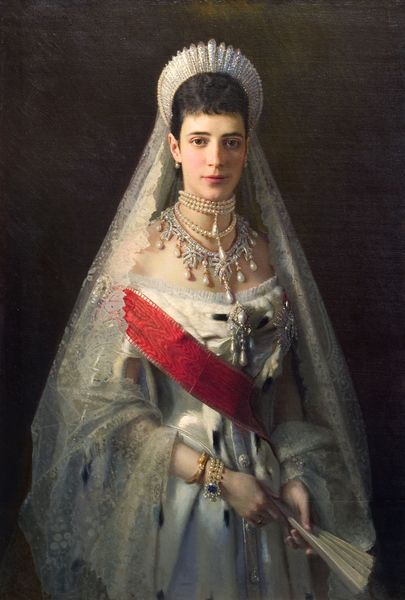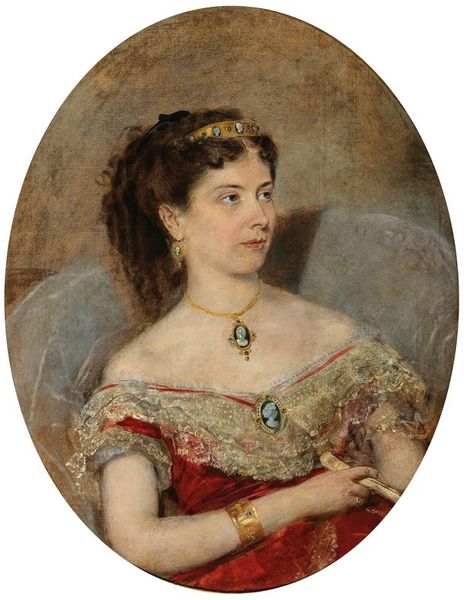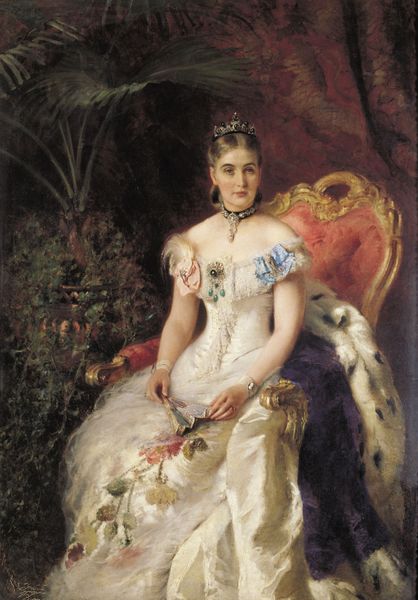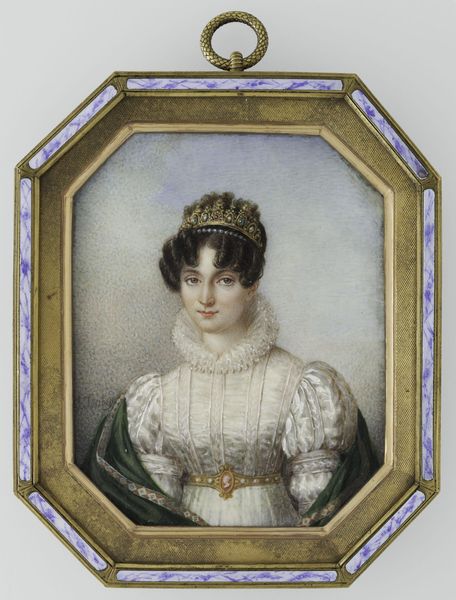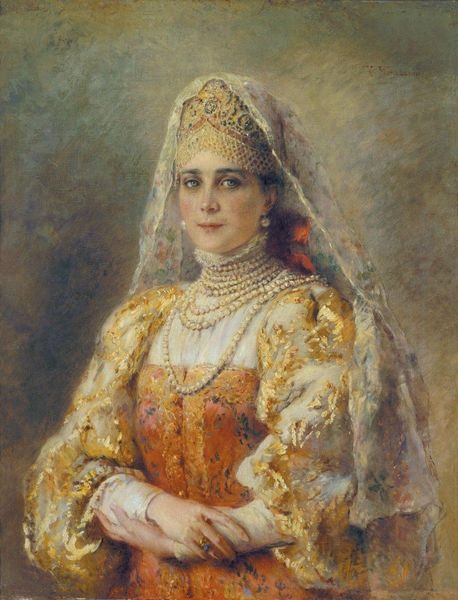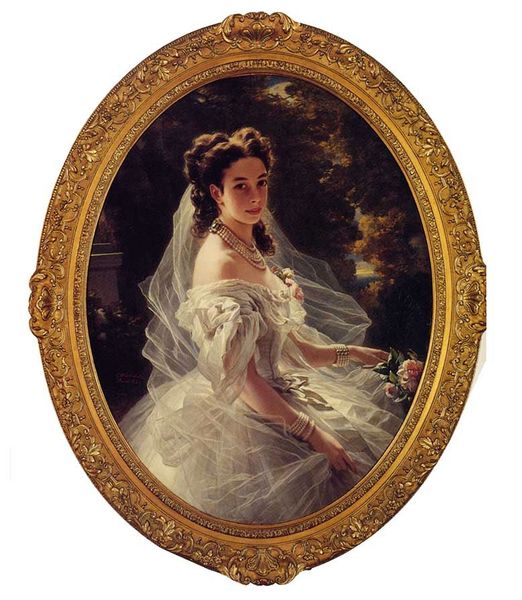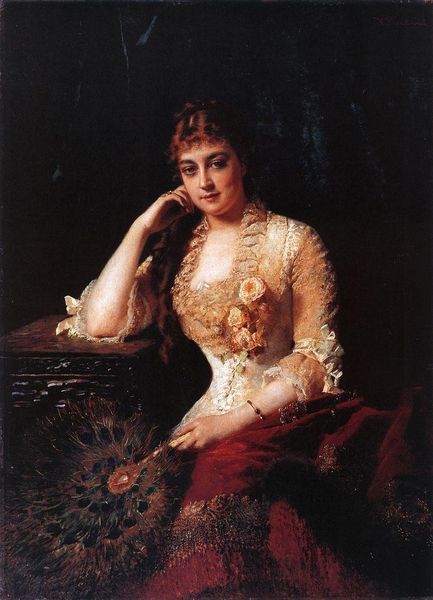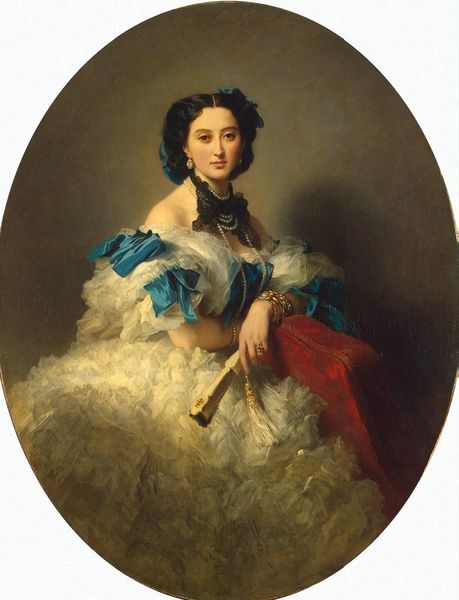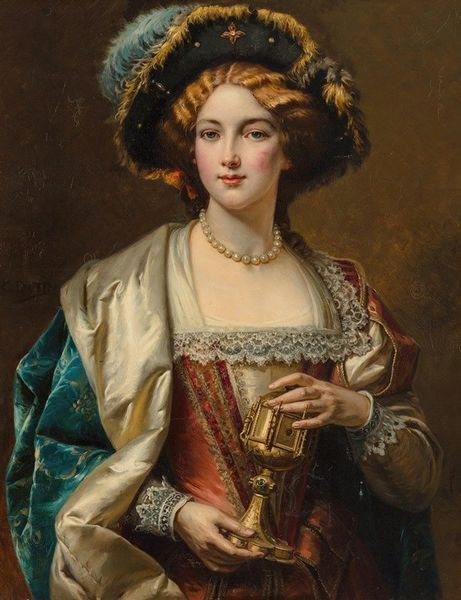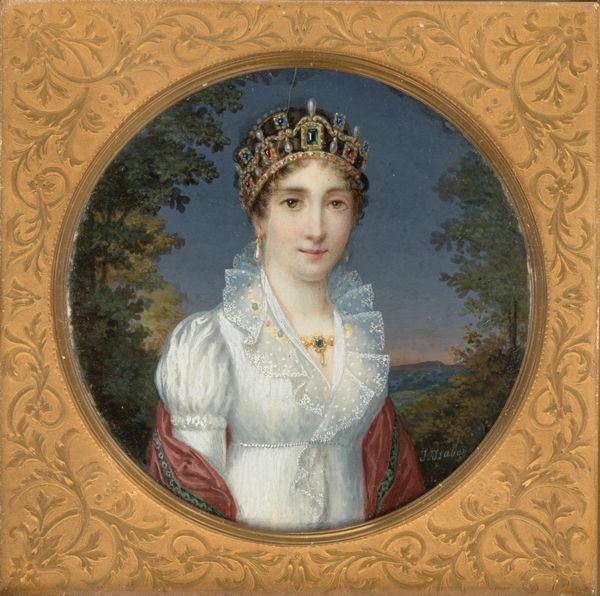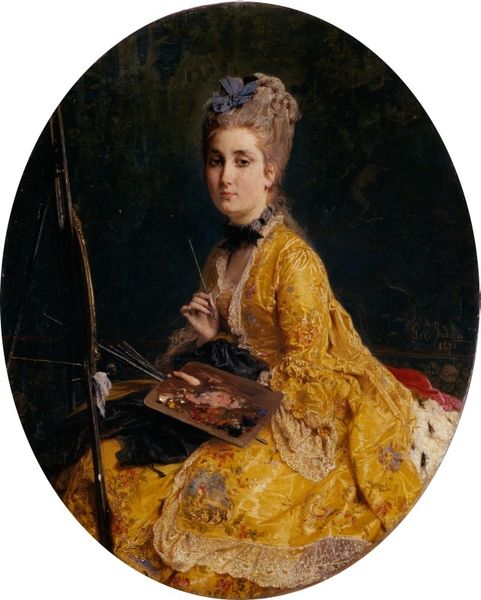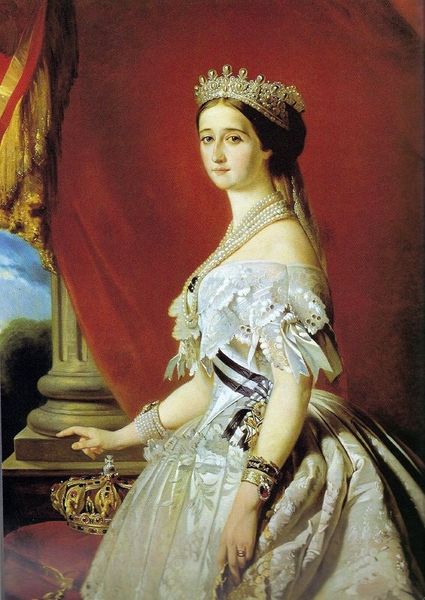
painting, oil-paint
#
portrait
#
painting
#
oil-paint
#
romanticism
#
russian-avant-garde
#
genre-painting
#
history-painting
#
academic-art
#
realism
Copyright: Public domain
Curator: Before us we have a painting entitled "Portrait of Maria Feodorovna (Dagmar of Denmark)," by Konstantin Egorovich Makovsky. It's rendered in oil. Editor: There’s a certain somberness, even in the face of all that radiant jewelry. The tight crop and the darkness of the background certainly contribute to this rather serious atmosphere. Curator: Precisely. The composition, confined within a tondo shape, places intense focus on the sitter. Makovsky employs a striking chiaroscuro. The subtle gradation around her face really does enhance her serene, almost ethereal presence. Editor: The sapphires are especially evocative; traditionally they are emblems of loyalty, wisdom, and faith. Do you think it's intended as a representation of her regal qualities, a statement about her character and rule? Curator: Indeed. Given the period, such adornments held tremendous symbolic value, reinforcing Maria Feodorovna's status and virtues. The strategic placement of light reflects opulence, but look closer and you'll notice a carefully subdued application; it stops just short of gaudiness. The artist's command of light and shadow defines the very essence of her power. Editor: She embodies an archetype: the regal matriarch, serene but subtly imposing. Beyond its artistic merits, portraits such as these also offer glimpses into a vanished world, echoing with power and tradition. This goes far beyond mere representation; it evokes layers of cultural meaning. Curator: You've pinpointed it masterfully. This work is much more than the sum of its parts; more than pigment and brushstrokes. It’s an intersection of historical record, political iconography, and artistic finesse. Editor: And in appreciating those nuances, we start to recognize the portrait's sustained ability to resonate with new viewers, generations later. Curator: I agree. Such art transcends simple aesthetics; it invites dialogue across time, mediated by form and symbolic intent.
Comments
No comments
Be the first to comment and join the conversation on the ultimate creative platform.
